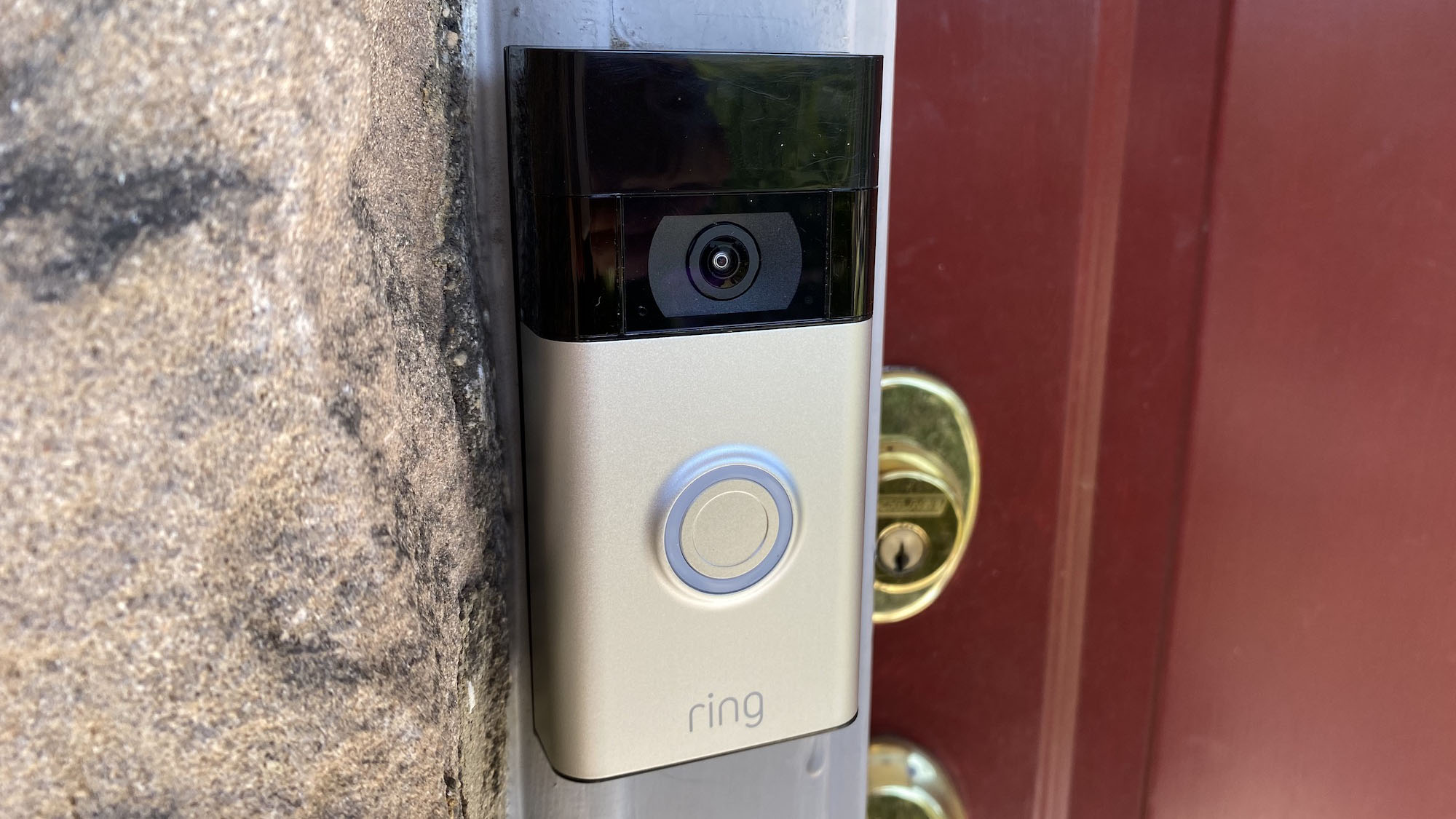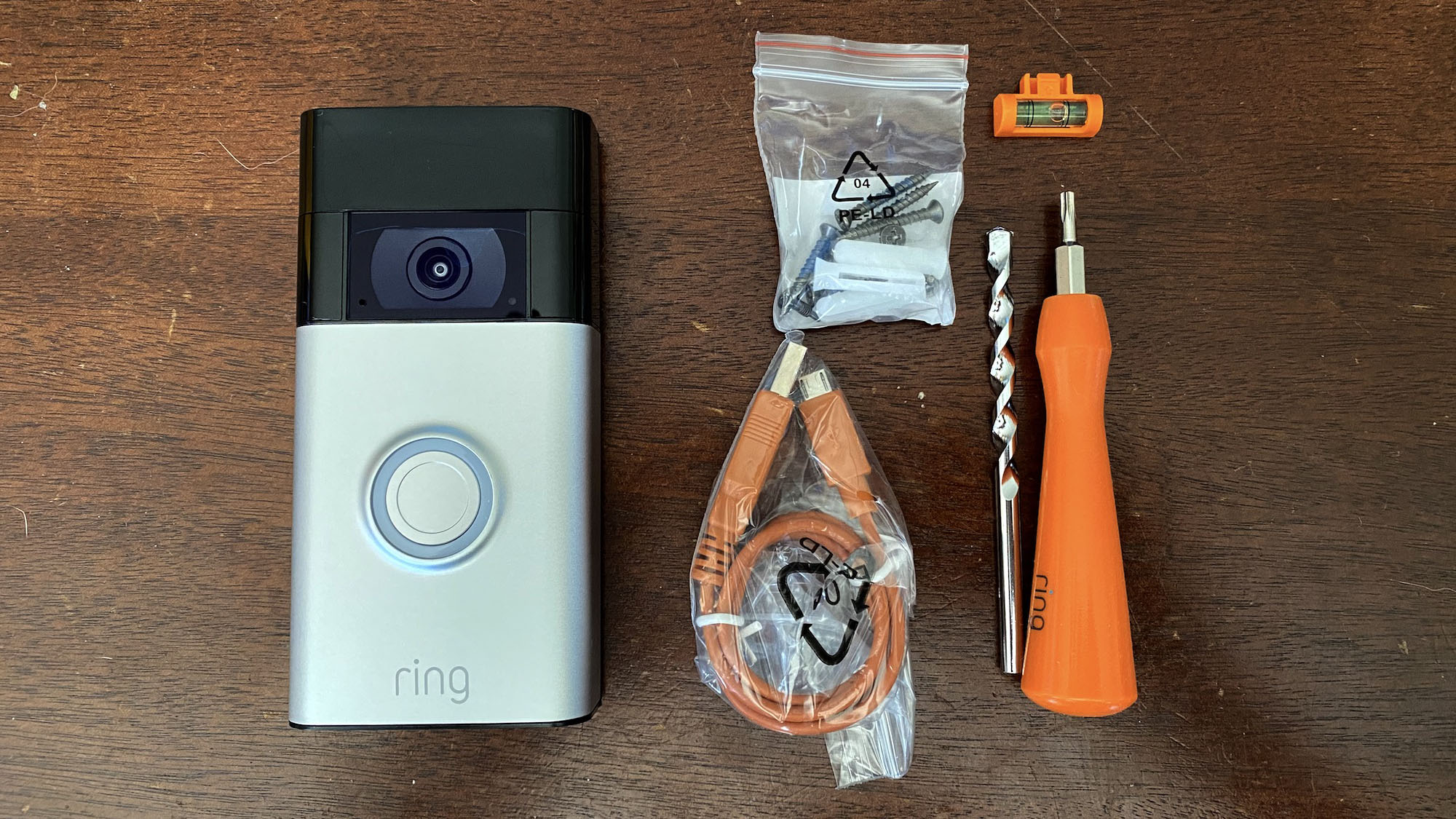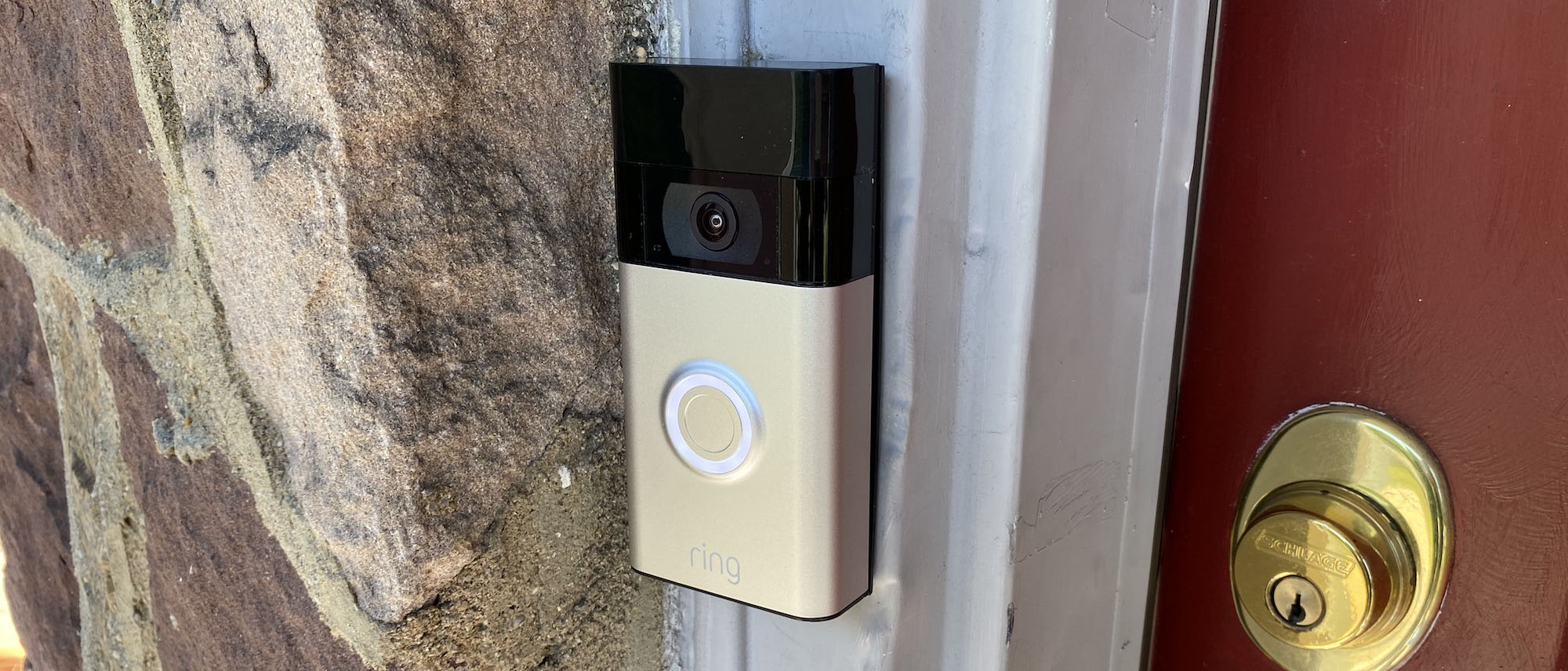Tom's Guide Verdict
The Ring Video Doorbell (2020) is the best video doorbell you can get for less than $100.
Pros
- +
Works both wired and on battery power
- +
Easy to install
- +
Good quality video
- +
Inexpensive
Cons
- -
More difficult to recharge than other models
- -
Doesn’t show base of door
Why you can trust Tom's Guide
One of the best cheap smart home devices was the original Ring Video Doorbell; this $99 device was one of the first video doorbells, and it did its job well, letting you know who was at your front door. However, after six years, it was starting to show its age. For instance, its resolution was 720p, where 1080p has become the new standard. Now, Ring’s lowest-priced video doorbell has the same 1080p resolution as the company’s other cameras, and can be hardwired or run off battery power, making it very versatile.
Just as important, the ecosystem of Ring products has increased significantly, making the video doorbell a much more versatile device when you pair it with other sensors and security lights. While we have some issues with this device, our Ring Video Doorbell review shows why it’s the best video doorbell under $100.
Update (September 2024): Ring is discontinuing the Ring Video Doorbell (2nd gen) and replacing it with the Ring Battery Doorbell, which features head-to-toe video and 23% longer battery life. It will also have person and package detection, provided you sign up for a Ring subscription. The Ring Battery Doorbell is available for $99 at Amazon.
Ring Video Doorbell (2nd Generation): Price and release date
The Ring Video Doorbell 2020 costs $99, and its release date was mid- 2020. It’s the least expensive video doorbell in Ring’s portfolio; the Ring Video Doorbell 3 ($199) and Ring Video Doorbell 3 Plus ($249) have the same resolution video, but additional features such as Pre-roll and better motion detection. For more information, be sure to check out our in-depth comparison of the Ring Video Doorbell vs. Ring 3 vs. Ring Pro.
Keep in mind that, if you want to save recordings from the doorbell, you’ll have to sign up for one of Ring’s subscription plans, which start at $3/month or $60/year.
Ring Video Doorbell (2nd Generation): Design
The Ring Video Doorbell looks exactly the same as the original, but at 5 x 2.4 x 1.1 inches is a smidge wider. The lower two-thirds of the device has a silver exterior, with a large button in the middle. The top third, where the camera is housed, is a glossy back. The doorbell is also available with a dark bronze finish. Unlike Ring’s higher-end doorbells, this one is not replaceable.

As with the original (and most other Ring video doorbells) the Ring Video Doorbell 2nd generation can be hardwired or run off battery power, one of the key features that differentiates it from much of the competition.
However, it’s more challenging to recharge the Ring Video Doorbell than the Ring 3. That’s because the budget Ring does not have a removable battery, so you have to unmount the entire doorbell when its battery dies.
Get instant access to breaking news, the hottest reviews, great deals and helpful tips.

Instead of a single security screw, the new Ring has two, which should make it a bit harder to steal. Unlike pricier Ring video doorbells, the budget model does not come with any wedges, which help you angle the device more towards your door or doorstep. You can purchase wedges separately for $20 each.
Ring Video Doorbell (2nd Generation): Video quality
The biggest difference between the original $99 Ring and the 2020 version is that the new model has a 1080p camera, as opposed to the 720p version in the original. Having used both, there’s a noticeable improvement in quality, though the original was pretty good.
Videos recorded during the day revealed strong colors and details. Even though my porch was shaded, the Ring did a good job of showing visitors’ faces against a bright, sunny backdrop. Night videos were less detailed, but still clear enough to see visitors. One issue, particular to my house, is that the front door is recessed, which causes any camera’s infrared lights to reflect off a section on the right, which shows up as bright white on nighttime recordings.

Audio was good when someone was standing close to the door, but at about four feet away, voices start to sound distant.
The new Ring has a 155-degree field of view horizontally and a 90-degree vertical field of view. I wish that Ring or one of the other top video doorbell makers would design a device that can show you what’s directly at the base of your door — where packages are most likely to be dropped. Because the Ring didn’t come with a wedge, the closest I could see to the base of my door was a good three feet, basically the depth of my entire front porch.
Ring Video Doorbell (2nd Generation): Features
The new Ring 2nd generation has a “near” motion zone that extends from 5 to 15 feet in front of your door. If you live on a busy street, it should definitely help cut down on false alerts. You can also set it to alert you only when a person is identified; Ring cautions that this may delay notification by a few seconds.

There’s a few things I’d still like to see Ring add. For one, when you receive a notification on your phone that someone’s at the door, you have to open the Ring app to see who’s there. The notifications from the Arlo Video Doorbell display a thumbnail image on your lock screen, which is extremely helpful. If I’m in the other corner of my house, I want to know if it’s a visitor or someone dropping off a package.
In July 2021, Ring launched end-to-end encryption for its video doorbells and home security cameras. Unfortunately, this feature is not available for battery-powered devices, such as the Ring Video Doorbell (2nd gen). Here is a complete list of Ring video doorbells with end-to-end encryption as well as instructions on how to enable the feature. However, this may be the only way to prevent local law enforcement from potentially viewing your footage at any time, which they can normally do as long as they have Ring's permission.
Ring Video Doorbell (2nd Generation): Subscription costs
Unless you subscribe to Ring Protect, you can only view live footage from the video doorbell. If you want to record videos, you can subscribe to one of two plans. Ring Protect Basic ($3/month, $30/year) provides coverage for one camera, while Ring Protect Plus ($10/month, $100/year) covers all Ring devices at one location.
Each plan offers 60 days of rolling cloud storage, while the Plus plan also provides 10% off Ring devices, extended warranties, and professional monitoring if you have a Ring Alarm system.
To see how Ring’s storage plans compare to Arlo and others, check out the best security camera storage plans.
Ring Video Doorbell (2nd Generation): Smart home connectivity
A lot has changed since Ring launched its original video doorbell. Most significantly, the company was purchased by Amazon. Consequently, you can view both live and recorded video on an Amazon Echo Show or other Alexa-enabled smart display. However, you can’t use Ring’s video doorbells with Google Assistant, the Nest Hub, or the Nest Hub Max.
At the moment, the Ring Video Doorbell does not work with Samsung SmartThings, but a company representative said the integration would be added.
The other thing that’s changed is that Ring no longer makes just video doorbells. It now has a suite of products, such as smart lights, motion sensors, and home security systems, all of which can be linked to its video doorbells. So, for instance, if you have Ring Solar Pathlights, you can set the Ring Video Doorbell to automatically start recording if the Pathlights detect motion. It’s a handy way to get around the fact that the Ring Video Doorbell lacks the Pre-roll feature found in the company’s pricier video doorbells.
Ring Video Doorbell (2nd generation): Neighbors
Any discussion of Ring video doorbells or cameras must also include Ring’s Neighbors app, which lets you view and post about incidents in your neighborhood, such as package theft or other crimes, lost pets, or even “neighborly moments,” as the app calls them. While you don’t need a Ring device to join the app, most of the incidents posted in my area were from Ring owners who shared video of porch pirates or people trying to break into cars.
The larger issue around Neighbors is that Ring has partnered with many local law enforcement agencies around the U.S., which lets those agencies view footage posted to the Neighbors app, and request video footage from Ring. (However, it is only provided if the user gives permission, or if Ring is compelled to provide the information from a court order). This led to numerous privacy concerns, which caused Ring to add more protections for users. However, you can opt out of receiving notifications from law enforcement, and in the app, view which agencies have partnered with Ring.
Ring Video Doorbell (2nd Generation) review: Verdict
The differences between the 2020 Ring Video Doorbell and the original aren’t radical — the 1080p camera is the most significant — but what made the first good also makes its successor the best video doorbell under $100. It can be installed virtually anywhere, captures high-quality video, and works with a variety of other smart home devices, albeit mostly those from Amazon and Ring. While the new Ring Video Doorbell isn’t perfect, its combination of performance, features, and price make it the best video doorbell at this price.

Michael A. Prospero is the U.S. Editor-in-Chief for Tom’s Guide. He oversees all evergreen content and oversees the Homes, Smart Home, and Fitness/Wearables categories for the site. In his spare time, he also tests out the latest drones, electric scooters, and smart home gadgets, such as video doorbells. Before his tenure at Tom's Guide, he was the Reviews Editor for Laptop Magazine, a reporter at Fast Company, the Times of Trenton, and, many eons back, an intern at George magazine. He received his undergraduate degree from Boston College, where he worked on the campus newspaper The Heights, and then attended the Columbia University school of Journalism. When he’s not testing out the latest running watch, electric scooter, or skiing or training for a marathon, he’s probably using the latest sous vide machine, smoker, or pizza oven, to the delight — or chagrin — of his family.

